CCTV News:Induction cooker, also known as electromagnetic cooker, has the characteristics of small size, fast heating and no open flame, and has become one of the daily appliances used by thousands of households. However, the national supervision and spot check on the product quality of this product shows that it is such a household appliance with a very high penetration rate that four out of every ten products are unqualified.
Nearly 40% of electromagnetic stoves are unqualified.
The reporter learned from the General Administration of Quality Supervision, Inspection and Quarantine that this year’s national supervision and spot check on the quality of electromagnetic stoves has ended, and the test results show that the quality problems of electromagnetic stoves produced in China are not optimistic at present.
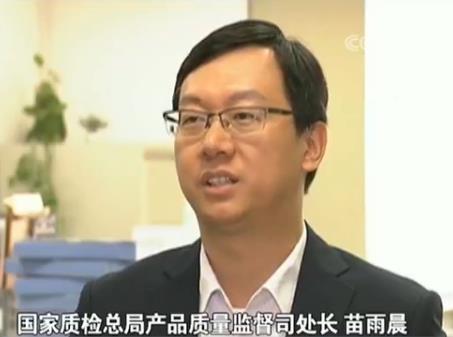
Miao Yuchen, Director of Product Quality Supervision Department of AQSIQ:We organized a total of 48 batches of electromagnetic stoves produced by 48 enterprises in Guangdong, Zhejiang and Jiangsu provinces to carry out national supervision and spot checks. After inspection, 19 batches of products were unqualified.
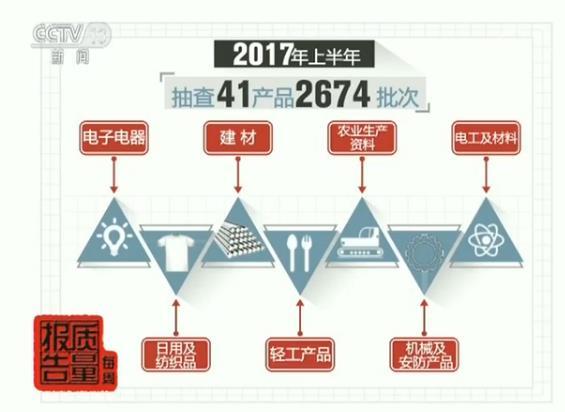
According to the statistics of the General Administration of Quality Supervision, Inspection and Quarantine, in the first half of this year, the state supervised and spot-checked 41 kinds of products, mainly involving 2,674 batches of products in seven categories closely related to consumers, such as electronic appliances, daily use and textiles, building materials and light industry, of which 250 batches were unqualified, with an overall unqualified rate of 9.3%. However, 19 of the 48 batches of electromagnetic stove products in this spot check were unqualified, and the unqualified rate was as high as 39.6%, which was more than four times that of the products in the first half of the year supervised by the state. According to the reporter’s understanding, the electromagnetic stove has therefore become the product with the lowest qualified rate among the 41 products supervised and randomly selected by the state in the first half of this year.
Miao Yuchen, Director of Product Quality Supervision Department of AQSIQ:The problems found in spot checks involve abnormal work, energy efficiency grade, mechanical strength, electromagnetic compatibility and other items, among which the unqualified electromagnetic compatibility index is more prominent.
The National General Electronic Components and Products Quality Supervision and Inspection Center, located in China Saibao Laboratory, is one of the testing institutions that undertake the national pumping task of electromagnetic stoves. The reporter learned here that according to the relevant national standards and norms, the inspection items of electromagnetic stoves can be divided into three parts.
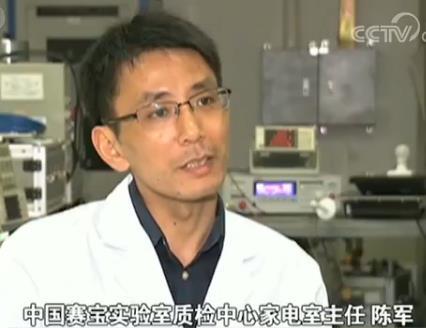
Chen Jun, Director of Home Appliances Room of Quality Inspection Center of China Saibao Laboratory:The first part is the electrical safety requirements of products, which are consistent with the testing standards of compulsory product certification in China and are the basic safety requirements of products. The second part is the energy efficiency grade of products, including thermal efficiency and standby power consumption, which is the basic energy efficiency requirement of induction cooker products in China. The third part is the electromagnetic compatibility of products, including terminal disturbance voltage and electromagnetic radiation disturbance.
Testers told reporters that the electrical safety, energy efficiency rating and electromagnetic compatibility of electromagnetic cookers actually cover 19 items such as protection against touching live parts, abnormal work, mechanical strength, energy efficiency rating and electromagnetic radiation disturbance. In this spot check, as many as seven items failed.
Then, what impact will these unqualified items have on consumers’ use of electromagnetic stoves? Will it harm the personal safety of users?
Some electromagnetic cookers can’t stand a slight bump.
During the investigation, the inspector told the reporter that for the electromagnetic cooker, which is a household appliance that must carry other items when it is used, the durability of the stressed microcrystalline panel is the basic requirement. The inspection item of mechanical strength is to specifically check whether the structure and shell of the electromagnetic stove can withstand the knock and impact that may occur during use.

Zhou Shuisheng, Electrical Appliance Room Engineer of Quality Inspection Center of China Saibao Laboratory:According to the national standard, we use this spring impact hammer to impact every weak position on the panel for three times, and the impact energy is 0.5 Joule, so it is required that the panel of the induction cooker cannot be damaged after the impact test.
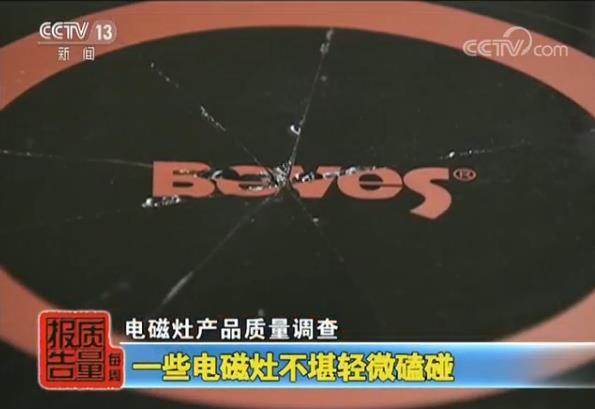
The reporter noticed that during the inspection, this microcomputer-based induction cooker named BT220 produced by Zhongshan Pentium Electric Appliance Co., Ltd. had obvious cracks on the microcrystalline panel after three consecutive impacts. According to the inspector, the rupture of the microcrystalline panel of the electromagnetic stove not only affects the normal use, but also may cause personal injury to consumers, and even lead to the risk of electric shock.
Zhou Shuisheng, Electrical Appliance Room Engineer of Quality Inspection Center of China Saibao Laboratory:The panel of this induction cooker is cracked, resulting in many cracks. Then these cracks will destroy the overall insulation system of the induction cooker and reduce the safe distance between the human body and the live parts. Then the user may be scratched by the edges of these cracks in the induction cooker during the subsequent use, and may also get an electric shock, which is dangerous. According to the national standards, this induction cooker is a seriously unqualified product.
The reporter learned in the interview that in addition to safety, when most consumers buy electromagnetic stoves, the most important thing is whether to save electricity. Therefore, the grade of energy efficiency has become an important index to evaluate the quality of electromagnetic stoves.
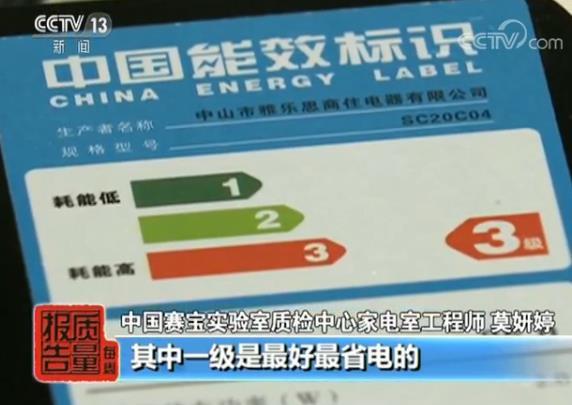
Mo Yanting, Electrical Appliance Room Engineer, Quality Inspection Center of China Saibao Laboratory:All domestic electromagnetic cookers need to have china energy label. The energy efficiency label will classify the product’s energy efficiency level, in which the first level is the best and most energy-saving, and the third level is the most basic requirement.
According to professionals, according to the national mandatory standard "Limits and Levels of Energy Efficiency of Household Electromagnetic Cookers", the energy efficiency level includes two indicators: thermal efficiency and standby power. Thermal efficiency is a specific quantitative index for electromagnetic cookers to convert electric energy into effective thermal energy. For electromagnetic cookers with rated power greater than 1200W, thermal efficiency can be divided into three levels: not less than 90%, not less than 88% and not less than 86%. The higher the thermal efficiency, the higher the energy utilization rate, and the more energy-saving the product. The corresponding energy efficiency level is also higher.

Mo Yanting, Electrical Appliance Room Engineer, Quality Inspection Center of China Saibao Laboratory:Although the thermal efficiency is not the safety performance index that directly affects personal safety, such as electric shock prevention and fire prevention, it is closely related to the people’s money bags. Assuming that the electromagnetic stove at home consumes more electricity every time it heats a pot of water, the people will pay more money and cause unnecessary waste over time.
The virtual standard energy efficiency grade of a small number of electromagnetic stoves
Saving money and electricity affects the purchasing tendency of some consumers. Therefore, in order to cater to consumers’ psychology, some enterprises do not make efforts to improve product quality, but make up their minds on energy efficiency labeling, falsely marking product energy efficiency grades.
Mo Yanting, Electrical Appliance Room Engineer, Quality Inspection Center of China Saibao Laboratory:Among the 48 batches of electromagnetic stove products that we randomly selected this time, the energy efficiency grade of six batches of electromagnetic stoves failed to meet the requirements. One batch was standby power, which exceeded its specified value, while the other five batches failed to reach its nominal value of thermal efficiency. The most serious product was a product with a nominal thermal efficiency of 88%, while the measured thermal efficiency was only 85.1%. Can’t even reach the most basic level 3.
The reporter noticed that this product marked with energy efficiency grade 2, but the measured value can’t even reach grade 3, is an electromagnetic stove with the name of Suochi brand PS-22 produced by Guixiang Electric Appliance Co., Ltd., Zhongshan City, Guangdong Province. The remaining five batches of products with unqualified energy efficiency grades are respectively labeled as:
HW-22 electromagnetic cooker produced by Hawang Electric Appliance Co., Ltd., Zhongshan City, Guangdong Province;
An electromagnetic cooker of model YW20A-301 produced by Yongwang Electric Appliance Industry Co., Ltd. in Zhongshan City, Guangdong Province;
The VK-20C80E electromagnetic cooker produced by Weiwang Daily Electric Appliance Co., Ltd., Foshan City, Guangdong Province;
SJ-20KB electromagnetic cooker produced by Guangdong Shiji Electric Appliance Industry Co., Ltd.;
DP22 electromagnetic cooker produced by dongfeng town Hamada Electric Appliance Factory, Zhongshan City, Guangdong Province.
The virtual standard energy efficiency of electromagnetic stoves is mostly to cover up Jerry-building.
Professionals told reporters that the energy efficiency rating items of electromagnetic cookers are unqualified. On the surface, it seems that manufacturers falsely label product parameters, but in essence it covers up the bad behavior of some enterprises to cut corners in order to reduce production costs.
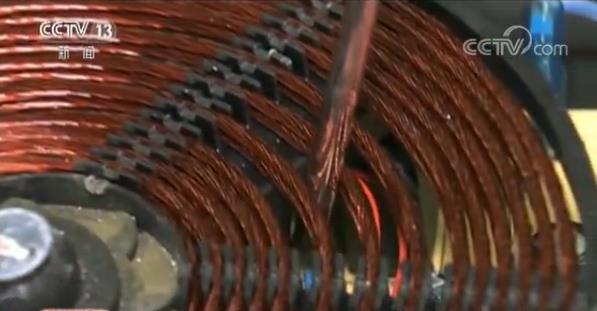
Mo Yanting, Electrical Appliance Room Engineer of China Saibao Laboratory:One of the factors that affect the thermal efficiency of electromagnetic cookers is the coil disk. In order to save costs, some manufacturers often have obvious differences in material selection. Now we can compare it. You see, this is a qualified product. Its coil disk has a thick wire diameter and a very close distance, so the heating effect of this coil disk is very good and energy-saving. Looking at another unqualified product in this spot check, we can see that its wire diameter is only half of that of the previous one, and the distance between the rollers is loose. You see that the tip of this screwdriver is going in, and the heating effect of this coil disk is relatively low. Next, let’s look at another one with worse thermal efficiency. This wire diameter is obviously thinner and the distance is looser, and the screwdriver can pass through it easily and casually. The thermal efficiency of such products is definitely not high, and it can’t meet the requirements of energy efficiency grade at all.
Whether it is the protection against touching live parts, the firmness of microcrystalline panels, or the coils that affect thermal efficiency, careful consumers can more or less see some tricks through careful observation. But for the electromagnetic cooker, there are some security risks, because of its special closed structure, which can neither be seen nor touched, so the potential harm is even greater. Continue to watch our program.
The annual output of electromagnetic cookers in China exceeds 30 million sets.
The reporter learned in the interview that the world’s first household electromagnetic stove was born in Germany in 1957 and entered China in the late 1980s. Because there are many advantages such as no open flame, no smoke and dust, easy to use and so on, the electromagnetic stove is quickly recognized by consumers. At present, there are more than 500 enterprises producing electromagnetic stoves in China, with an annual output of more than 30 million units.
Chen Jun, Director of Home Appliances Room of Quality Inspection Center of China Saibao Laboratory:At present, the industry of induction cookers is mainly concentrated in Guangdong and Zhejiang provinces, including Shunde and Zhongshan in Guangdong, where more than 80% of enterprises are located.
The rapid development of electromagnetic stoves has attracted the attention of relevant regulatory authorities, and the General Administration of Quality Supervision, Inspection and Quarantine has listed electromagnetic stoves as national supervision and spot check products for seven consecutive years. However, compared with the pass rate of spot checks in the past seven years, the reporter noticed an abnormal phenomenon, that is, the pass rate of national supervision and spot checks of electromagnetic stoves was not less than 80% for four consecutive years from 2011 to 2014, but by 2015, this value fell off a cliff and plummeted to 7.7%; After that, it rebounded slightly in 2016, accounting for 28.8%. The qualified rate of 48 samples selected this year was 60.4%. They are all electromagnetic cookers, but why does the qualified rate of national supervision and spot check on product quality fluctuate so much?
Miao Yuchen, Director of Product Quality Supervision Department of AQSIQ:In 2015, we added two indicators of electromagnetic compatibility and energy efficiency grade for the first time, and checked 78 batches of products, 72 of which were unqualified, so the main problem focused on electromagnetic compatibility.
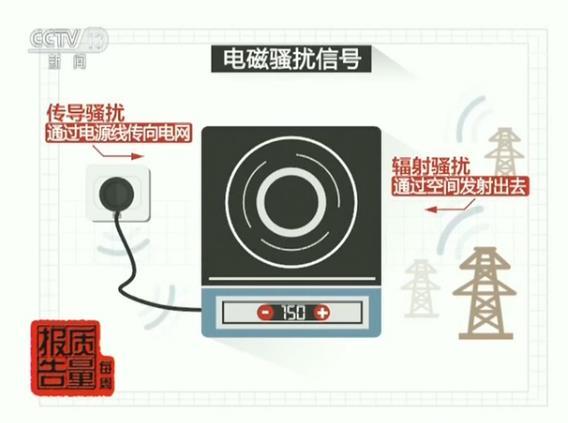
In the survey, professionals told reporters that almost all electrical equipment will send out electromagnetic harassment signals when working. Electromagnetic compatibility (EMC) means that when electrical equipment is working, the signals generated will neither interfere with other electrical equipment nor be interfered by other electrical equipment, so as to ensure that all equipment can work normally and be compatible with each other. For electromagnetic cookers, there are two kinds of electromagnetic disturbance signals: those transmitted to the power grid through power lines are called conduction disturbance, and those emitted through space are called radiation disturbance. In the standard, terminal disturbance voltage and electromagnetic radiation disturbance items are used to assess respectively.

Shao E, Engineer of EMC Room, Quality Inspection Center of China Saibao Laboratory:What is the essence of terminal disturbance voltage test? The induction cooker works, and when it works, your induction cooker takes electricity from the power grid. After work, some electromagnetic interference signals will be emitted to the power grid. This electromagnetic interference signal, it is all on the power grid. If your other electrical equipment, such as washing machine, air conditioner, TV set, all other electrical equipment and household electrical equipment, are hung on the power grid, you may receive the interference signal generated by the induction cooker, resulting in some faults. For example, it is possible that the washing machine just mentioned is interrupted and the TV set is short-circuited.
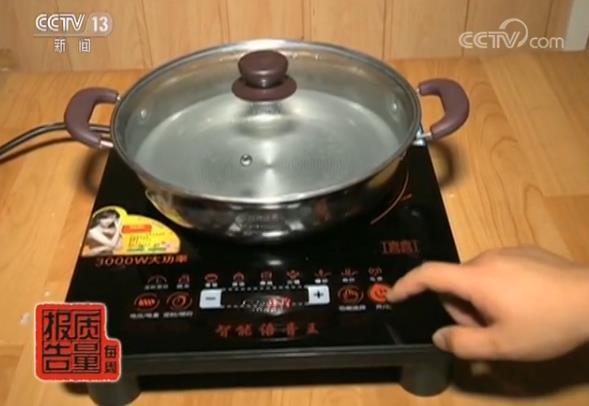
The reporter saw in the laboratory that this logo is calledAn electromagnetic cooker of model YW20A-301 produced by Yongwang Electric Appliance Industry Co., Ltd., Zhongshan City, Guangdong Province.When testing, the terminal disturbance voltage obviously exceeds the limit specified by the national standard.
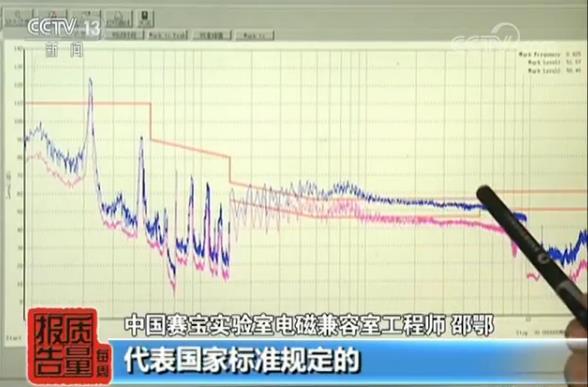
Shao E, Engineer of EMC Room, Quality Inspection Center of China Saibao Laboratory:The red line above represents a quasi-peak value limit stipulated by the national standard, the red line below is an average value limit stipulated by the national standard, and the blue line and pink line at the bottom are the results of our test of this sample, which respectively represent that the blue line is a peak value and the pink line is an average value. From this result, it can be seen that these frequency points have obviously exceeded the limit requirements stipulated by the national standard, so from this test result,
Some electromagnetic cookers are not designed properly.
The inspector told the reporter that the electromagnetic stove terminal disturbance voltage project was unqualified, mainly because the electromagnetic compatibility design of the product was unreasonable. The reporter noticed that as many as 17 of the 48 samples of the electromagnetic stove were unqualified in the terminal disturbance voltage test. This is also the highest unqualified item among all the 19 inspection items of the electromagnetic stove. Followed by another test item of electromagnetic compatibility: electromagnetic radiation disturbance, 14 unqualified samples, only 3 less than the unqualified number of terminal disturbance voltage test. Among them, the nominal name is:
Model J-C electromagnetic cooker produced by Jieliou Electric Appliance Co., Ltd., Shunde District, Foshan City, Guangdong Province;
The electromagnetic cooker with the model IC-A2102 produced by Guangdong Taikoo Electric Technology Co., Ltd.;
The model SYG-22 electromagnetic cooker produced by Songyangge Electric Appliance Technology Co., Ltd., Shunde District, Foshan City, Guangdong Province13 batches of samples, such as electromagnetic compatibility, terminal disturbance voltage and electromagnetic radiation disturbance, were unqualified.
The failure rate of the two items of EMC inspection far exceeds that of other inspection items. Why?

With the further investigation, the reporter learned that before 2015, the two national mandatory standards, Safety of Household and Similar Electrical Appliances and Energy Efficiency Limits and Energy Efficiency Grades of Household Electromagnetic Cookers, which were the basis for electromagnetic cooker products testing, did not involve electromagnetic compatibility testing. In January, 2015, the national mandatory standard "Limits and Measurement Methods of Disturbance Characteristics of Industrial, Scientific and Medical (ISM) RF Equipment" was officially implemented, which clearly stipulated that electromagnetic cookers, microwave ovens and other appliances were applicable to this standard, so the national supervision and spot check of electromagnetic cookers in that year included electromagnetic compatibility in the inspection scope for the first time. However, two years later, the reporter found that there are still many electromagnetic stove manufacturers who turn a blind eye to the EMC test of their products. In the investigation, the reporter noticed a detail. All the 48 samples in this spot check were marked as meeting the national use safety standards and energy efficiency standards, but none of the products were marked as meeting the national electromagnetic compatibility standards.
Chen Jun, Director of Home Appliances Room of China Saibao Laboratory:Some enterprises may not fully understand this requirement of electromagnetic compatibility, and think that it is not a requirement of compulsory certification of this product, so they do not produce products according to this standard, which leads to the product not meeting the requirements.
Professionals believe that electromagnetic cookers are products in China’s 3C compulsory certification catalogue, that is to say, 3C certification is the basic threshold for electromagnetic cookers to go on sale. In view of the fact that manufacturers generally ignore EMC projects at present, it is suggested that relevant departments revise the implementation rules of 3C certification of electromagnetic stove products in time, and bring the national standards related to electromagnetic compatibility into the scope of 3C certification, so as to promote enterprises to better understand and implement the standards and further improve product quality.
Experts said that the radiation power of induction cooker mainly depends on the leakage value of electromagnetic wave of induction cooker, and the greater the leakage, the greater the impact on users. Although there is no sufficient factual basis to prove that the radiation of induction cooker is harmful to human body, it is obvious that the lower the electromagnetic leakage level, the better the safety of products with lower radiation disturbance level. Therefore, it is safe and reliable for consumers to choose to buy induction cooker products that meet national standards.
(CCTV reporter Wang Jun)